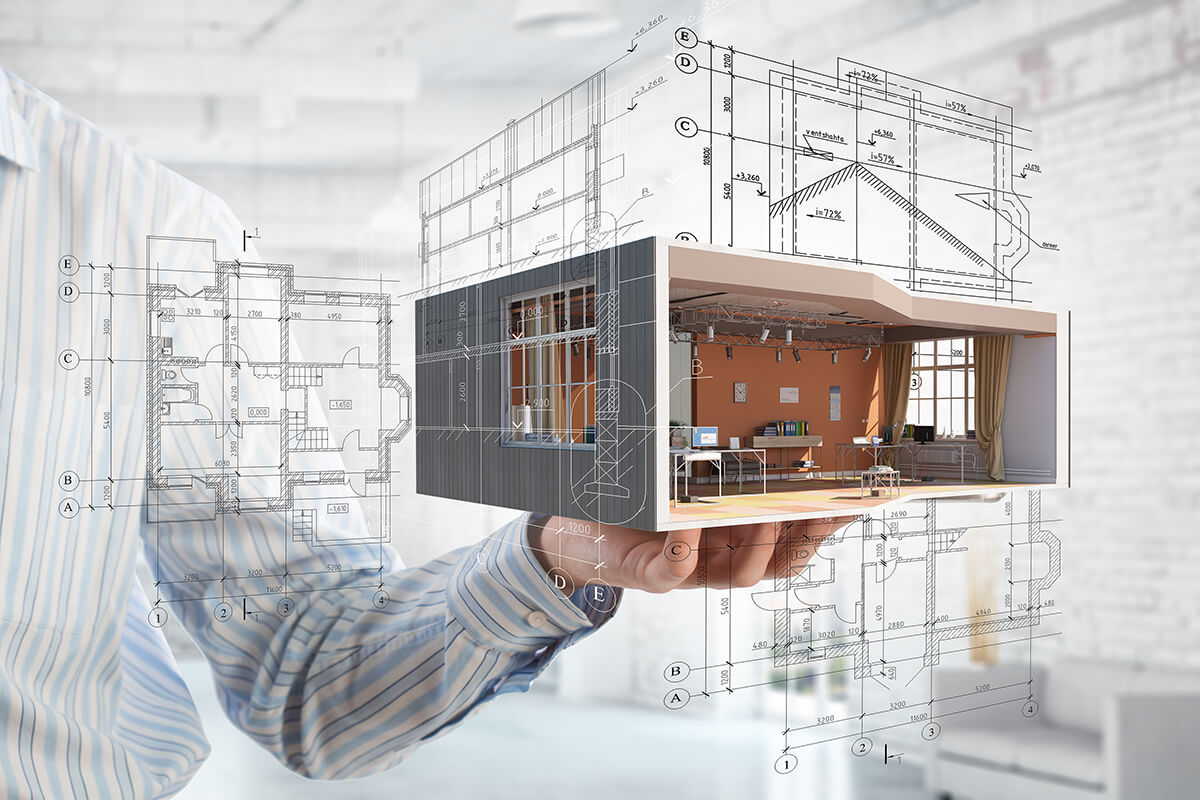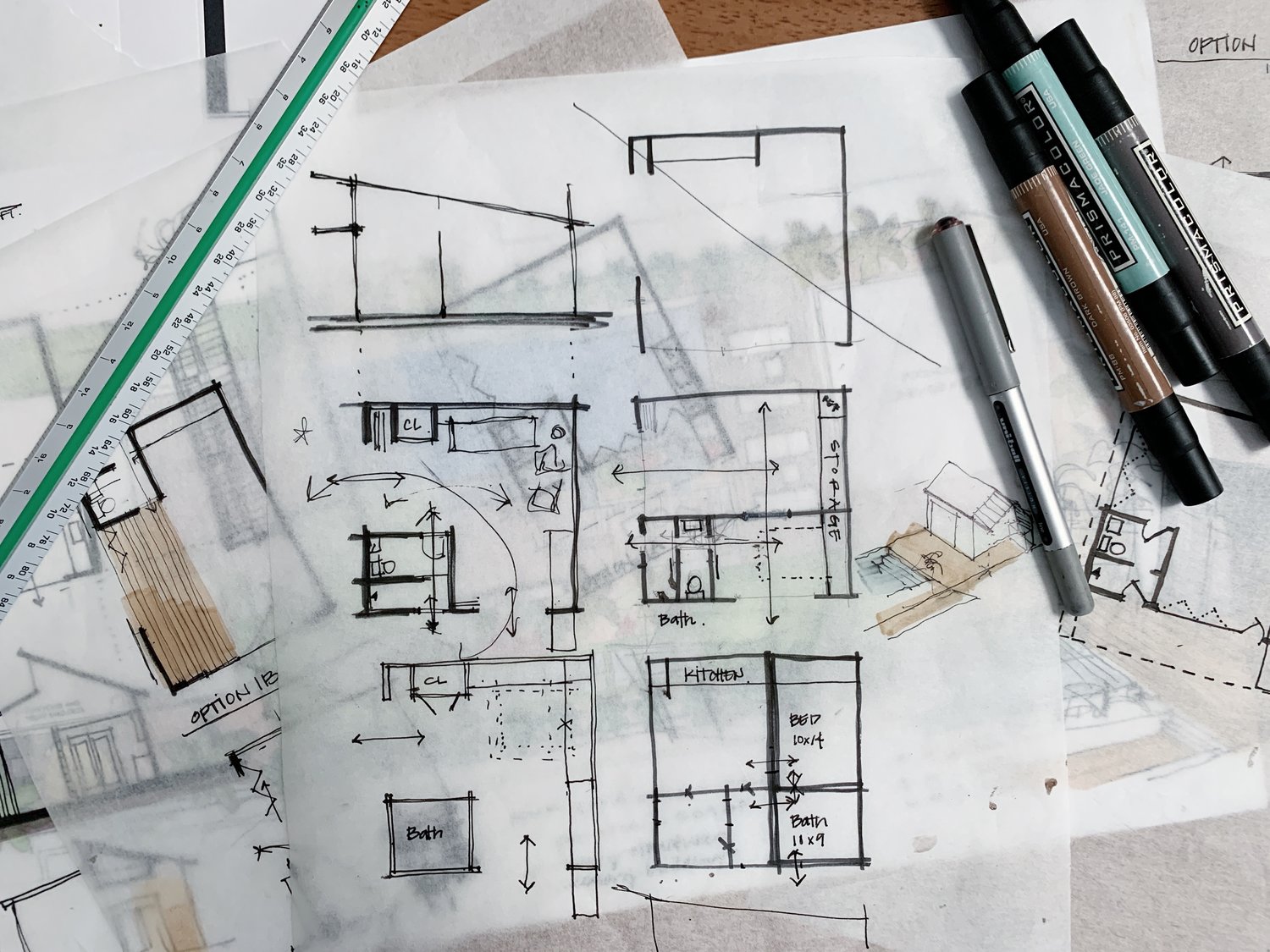Architect Recommended Apps for 3D Modeling
Architect Recommended Apps for 3D Modeling
Blog Article
Comprehending the Diverse Occupation Paths Available for Aspiring Architect
As an aspiring Architect, you have a world of occupation courses awaiting you. Each course uses special difficulties and chances to apply your creative thinking and technical expertise. Whether you're drawn to conventional design or the nuances of lasting style, there's a niche that aligns with your passions. Recognizing these varied alternatives can shape your expert trip, yet which direction will you choose to discover initially?
Conventional Design: Designing Buildings and Frameworks
Traditional architecture concentrates on designing structures and frameworks that blend functionality with visual charm. As you discover this field, you'll appreciate the detailed balance in between form and purpose. You'll learn to draw ideas from historic styles, incorporating aspects like balance, materials, and craftsmanship. Your designs can show cultural heritage, showcasing local traditions while satisfying modern-day needs.
You'll create skills in composing, model-making, and site evaluation, enabling you to visualize and communicate your concepts effectively. Engaging with clients, you'll need to recognize their vision and convert it right into possible layouts.
Furthermore, constructing codes and sustainability techniques are important in your job, guaranteeing your structures are environmentally friendly and safe. As you expand in your career, you'll discover chances in domestic, industrial, or also remediation projects, each offering special obstacles. Accepting conventional design leads the way for a meeting career that admires the past while forming the future.
Urban Planning: Forming Communities and Public Spaces
As an aspiring Architect, you can play a vital role as a city organizer, transforming how communities interact and work. By using area involvement methods, you'll assure that residents have a voice in shaping their environment. And also, integrating sustainable style principles will certainly aid develop rooms that not just meet today's requirements but likewise safeguard the future.
Duty of Urban Planners
While many may think about architects as the sole enthusiasts behind structures, city planners play an important function in forming the more comprehensive landscape of neighborhoods and public spaces. They analyze land use, zoning laws, and community needs to produce sustainable atmospheres that boost high quality of life. By collaborating with numerous stakeholders, you'll aid make parks, transport systems, and domestic areas that promote social communication and access. Urban coordinators also focus on environmental considerations, guaranteeing that growths integrate environment-friendly spaces and assistance biodiversity. Your knowledge in spatial style and community characteristics enables you to imagine future growth while protecting social heritage. In this critical duty, you'll directly influence exactly how people experience their surroundings, making every project a chance for favorable modification.
Area Interaction Techniques
Efficient neighborhood engagement techniques are vital for metropolitan organizers to assure that the voices of residents are heard and valued in the planning process. To cultivate meaningful discussion, you must focus on open online forums and workshops where community participants can express their ideas and problems. By proactively listening and incorporating comments, you'll produce spaces that reflect the neighborhood's demands, inevitably leading to more sustainable and successful metropolitan atmospheres.
Sustainable Layout Principles
When developing urban areas, integrating lasting layout principles is critical for producing atmospheres that prosper both ecologically and socially. Consider incorporating eco-friendly spaces, like parks and gardens, to boost biodiversity and boost air top quality.
Designing with water conservation in mind is also crucial-- believe about rainfall yards and permeable surface areas to take care of stormwater. Including neighborhood members throughout the planning procedure warranties that the spaces you produce fulfill their requirements and urge social interaction. By accepting these principles, you'll add to dynamic, sustainable city landscapes that benefit everyone.

Landscape Design: Developing Sustainable Exterior Environments
As you discover landscape architecture, you'll find necessary layout concepts that create attractive and useful outdoor spaces. Sustainable methods play an important duty in guaranteeing these settings prosper while lessening ecological influence. And also, you'll discover a variety of profession chances that enable you to make a genuine distinction in how people engage with nature.
Design Concepts in Landscape
Recognizing style principles in landscape style is important for producing lasting outside environments that balance with nature. You'll need to consider components like proportion, equilibrium, and scale to guarantee your styles really feel natural and inviting. In addition, pay interest to seasonal modifications, developing with materials that match the environments year-round.
Lasting Practices Introduction
Sustainable practices in landscape architecture not just focus on aesthetic appeals but also focus on eco-friendly health and wellness and source conservation. By integrating native plants, you improve biodiversity and reduce the need for chemical plant foods and pesticides. Executing efficient watering systems aids conserve water and minimizes runoff, safeguarding nearby communities. You can develop areas that promote dirt wellness, such as making use of organic materials and practicing permaculture principles. In addition, including eco-friendly infrastructure, like rain gardens and permeable sidewalks, help in stormwater administration and decreases urban warmth. You contribute to a healthier planet and provide rooms that promote neighborhood link when you develop outside settings with sustainability in mind. Ultimately, these practices guarantee your layouts benefit both people and the environment for several years ahead.
Job Opportunities Expedition
With a solid foundation in sustainable techniques, landscape architecture supplies a range of occupation courses that permit you to make a significant influence on the setting. Urban organizers frequently collaborate with landscape designers to create environment-friendly spaces in urban settings, enhancing city livability. If you're passionate concerning education, take into consideration ending up being a landscape style instructor, motivating future generations.
Lasting Layout: Concentrating On Eco-Friendly Practices
As you discover your job in architecture, accepting environment-friendly techniques can establish you apart in a competitive area. Lasting layout concentrates on creating structures that minimize ecological effect while improving passenger wellness. By including sustainable products, energy-efficient systems, and sustainable structure techniques, you'll add to a greener future.
Start by website obtaining knowledge of environment-friendly certifications like LEED or BREEAM, which can strengthen your qualifications. Take into consideration how natural light, ventilation, and thermal performance can maximize layout. Work together with engineers and environmental consultants to innovate solutions that reduce waste and preserve resources.
Don't forget the value of neighborhood participation-- interesting local stakeholders can motivate designs that integrate with the setting. As customers increasingly focus on sustainability, your proficiency in eco-friendly methods will certainly not just bring in projects yet additionally meet your interest for liable architecture. Welcome this critical element of the profession, and view your profession grow.
Historical Conservation: Securing and Restoring Social Heritage
While you begin on your architectural trip, think about the necessary function of historical preservation in keeping our social heritage. This area concentrates on the defense and repair of significant buildings, websites, and structures that inform the tales of our past. By taking part in historical preservation, you'll help protect the architectural legacy that shapes area identification.
As a historic preservation Architect, you'll evaluate historic importance and analyze the problem of structures. You'll work closely with preservationists and chroniclers to assure authentic remediation techniques are used. This job course allows you to blend creativity with study, enabling you to make options that appreciate original materials read more and workmanship.
Your job not just adds to sustainability by reusing existing buildings yet additionally fosters a sense of satisfaction within communities. Welcoming this course will certainly aid you become a guardian of history, maintaining the tales and aesthetics that improve our lives.
Interior Architecture: Enhancing Indoor Spaces
Historic preservation and indoor style both share a dedication to boosting the developed atmosphere, but they concentrate on various aspects. While historic preservation emphasizes preserving a framework's historical and social worth, indoor style zeroes in on maximizing indoor rooms for performance and aesthetics.
As a hopeful Architect, you'll discover that interior architecture allows you to mix imagination with technological skills. You'll develop areas that not only look good yet likewise promote comfort and efficiency. This area entails understanding how light, color, and products engage within a space, impacting state of mind and usability.
You'll deal with various tasks, from property homes to commercial offices, making sure that each setting fulfills the demands of its residents. By prioritizing individual experience, you can change insides right into practical and inspiring areas, making a considerable effect on exactly how individuals interact with their surroundings. Welcome the chance to improve interior atmospheres and form the method people live and work.
Industrial Style: Merging Capability With Looks
Commercial design plays a crucial duty in developing products that seamlessly blend looks with capability, making certain that what you make use of day-to-day is not just aesthetically attractive however also functional. As a hopeful Architect, you might immerse yourself in this field, concentrating on designing whatever from furniture to consumer electronics. Your work includes understanding individual demands, materials, and producing procedures, permitting you to develop ingenious remedies that improve daily experiences.
In commercial layout, you'll typically work together with engineers, makers, and marketing professionals, ensuring that your layouts are not just attractive but also viable. You'll find out to stabilize form and feature, prioritizing usability without compromising design. By honing your skills in mapping out, 3D modeling, and prototyping, you'll be well-appointed to bring here your concepts to life. This profession course supplies a vibrant atmosphere where creativity satisfies functionality, making it a gratifying selection for architects thinking about shaping the products of tomorrow.
Frequently Asked Concerns
What Educational Credentials Do I Need to Come To Be an Architect?
To come to be a designer, you'll need a specialist degree in design, commonly a Bachelor's or Master's. In addition, you'll need to complete a teaching fellowship and pass the Architect Registration Evaluation to exercise legally.
Exist Qualification Needs for Various Building Profession Paths?
Yes, there're accreditation requirements for different building paths. Architect. You'll need to pass examinations, total teaching fellowships, and occasionally go after specialized training, relying on your selected focus, like landscape architecture, city style, or historic conservation
What Software Skills Are Essential for Architects Today?

Just How Can I Gain Practical Experience While Examining Architecture?
You can gain useful experience by interning at architectural companies, taking part in style competitions, offering for community jobs, or working together with schoolmates on real-world jobs. These possibilities enhance your skills and build useful connections in the sector.
What Work Opportunities Exist Outside Traditional Design Firms?
You can discover different work possibilities outside conventional design companies, like metropolitan preparation, interior layout, landscape design, construction administration, realty advancement, and even functions in sustainability consulting. Each deals distinct difficulties and benefits.
Whether you're attracted to conventional style or the subtleties of sustainable layout, there's a niche that lines up with your rate of interests.When designing metropolitan areas, integrating sustainable style principles is critical for producing settings that thrive both ecologically and socially.As you discover landscape architecture, you'll uncover crucial design concepts that create functional and attractive outside areas.Understanding design principles in landscape architecture is necessary for developing sustainable exterior environments that harmonize with nature.In commercial style, you'll often collaborate with producers, marketing professionals, and designers, making sure that your layouts are not only attractive yet likewise feasible.
Report this page